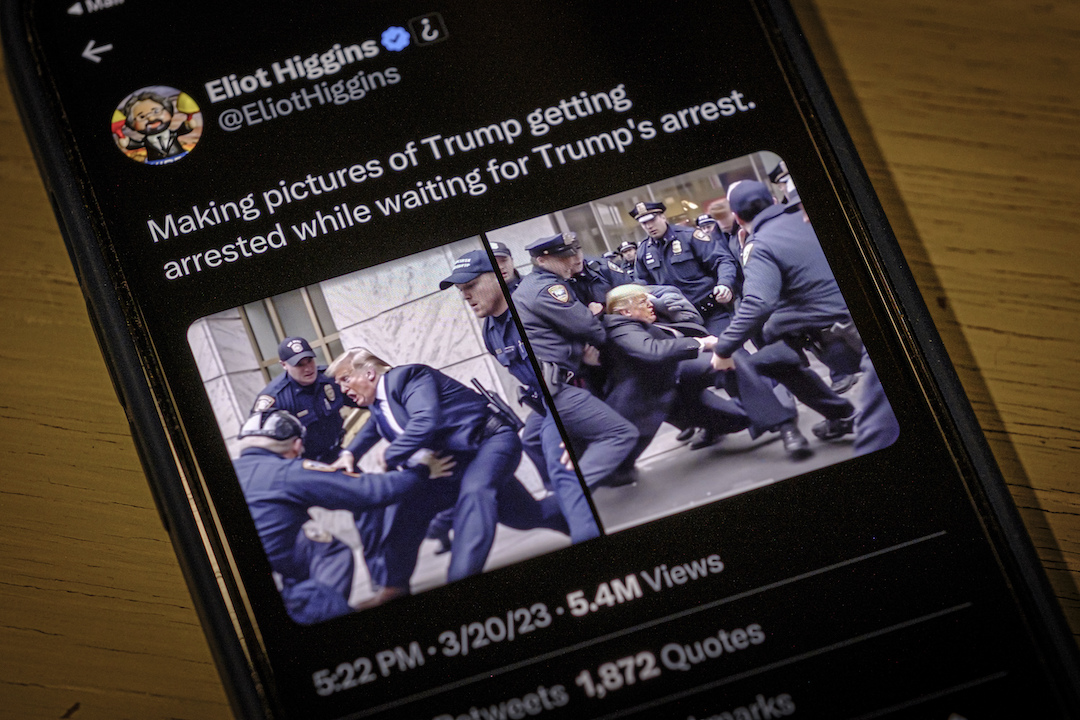The next generation of leaders at The New York Times is “not going to have careers like mine,” Times Washington bureau chief Carolyn Ryan said at the National Press Club Monday night, where Poynter co-hosted an event called “Closing Journalism’s Gender Gap: A Forum on Women and Leadership.”
A lot of those people will come from digital, Ryan said. “They haven’t been swashbuckling reporters.”
Women made up 10 percent of the leadership at newspapers in 1982, a percentage that rose only to 19 percent in 2012, according to statistics Poynter’s Kelly McBride showed early on at the forum. But at social media firms, University of Denver data showed, women made up 55 percent of leadership.

The panel at “Closing Journalism’s Gender Gap”: From left, Rachel Smolkin, Susan Goldberg, Madhulika Sikka, Jill Geisler, Carolyn Ryan and Anders Gyllenhaal.
National Geographic Editor-in-Chief Susan Goldberg said that when she edited the Plain Dealer and hired two women for top spots, a man at a community forum asked, “Are y’all running a henhouse over there?” Referring to advice Sheryl Sandberg gave in “Lean In,” Goldberg said, “Many of us have spent 30 years leaning in so far we fell on our face.”
Jill Abramson’s name never came up, but her ouster as the New York Times’ executive editor was nonetheless part of the discussion’s oxygen, as was Politico Magazine Editor Susan Glasser’s article “Editing While Female.”
“All leaders are going to make mistakes,” Politico Managing Editor for News Rachel Smolkin said. “Once the leader has made those mistakes, are you going to say they’re not temperamentally suited for this job?” If anyone thought women and men were treated the same by journalists, “I would refer to you Matt Lauer’s interview with Mary Barra,” Smolkin said.
Panelists talked about when women moved into traditionally male-dominated areas of coverage like war reporting. Soraya Sarhaddi Nelson did stories men would never touch when she was reporting from Kabul, NPR News Executive Editor Madhulika Sikka said. When Elisabeth Bumiller “put her hand up for the Pentagon,” Ryan said, it “sent a signal more broadly to Times reporters that this was an option for them.”
J-Lab Executive Director Jan Schaffer sort of picked up that theme when discussing women’s approach to entrepreneurship and journalism. The St. Louis Beacon-St. Louis Public Radio merger, Schaffer said, “might not have been done by a guy who had too big of an ego.”
Poynter’s stats said that only four of the country’s 25 largest daily newspapers have a woman top editor. Though McClatchy Vice President for News Anders Gyllenhaal said that of McClatchy’s 29 newspapers, 13 were edited by women. “You don’t get there by going out and trying to find women editors,” Gyllenhaal said. “You build it. This is a yearslong thing.”
McClatchy is trying to fill top spots at newspapers in South Carolina and Pennsylvania, Gyllenhaal said, but the company was disappointed by the lack of diversity among candidates. So it waited. “You can’t just take what comes in,” Gyllenhaal said.
Goldberg said she’d seen an “astounding difference” in the way men and women act when it comes to money. Poynter’s Jill Geisler referred to recent research from Harvard’s Kennedy School on the role of gender in salary negotiations. Women who ask for more money were “evaluated negatively on niceness, not seen as team players,” Geisler said. It was OK for them to advocate for others, she noted.
Ryan said that every time she’s gotten a promotion, soon after, “Seven to 10 people will knock on my door to tell me they need a raise.” In her last four jobs, she said, only one of those people was a woman. “I’m really struck by the reflex men seem to have in these situations,” she said. She suggested that “when we leave this room we kind of banish bashfulness.”
Poynter wants to keep this discussion going, McBride said. It plans to solicit donations for leadership scholarships for women. And it is going to run a series of essays on Poynter.org by women newsroom leaders — send pitches to push4parity@poynter.org. Those might be collected into a book, McBride said.
Related: Four good questions from #push4parity (API)






Comments